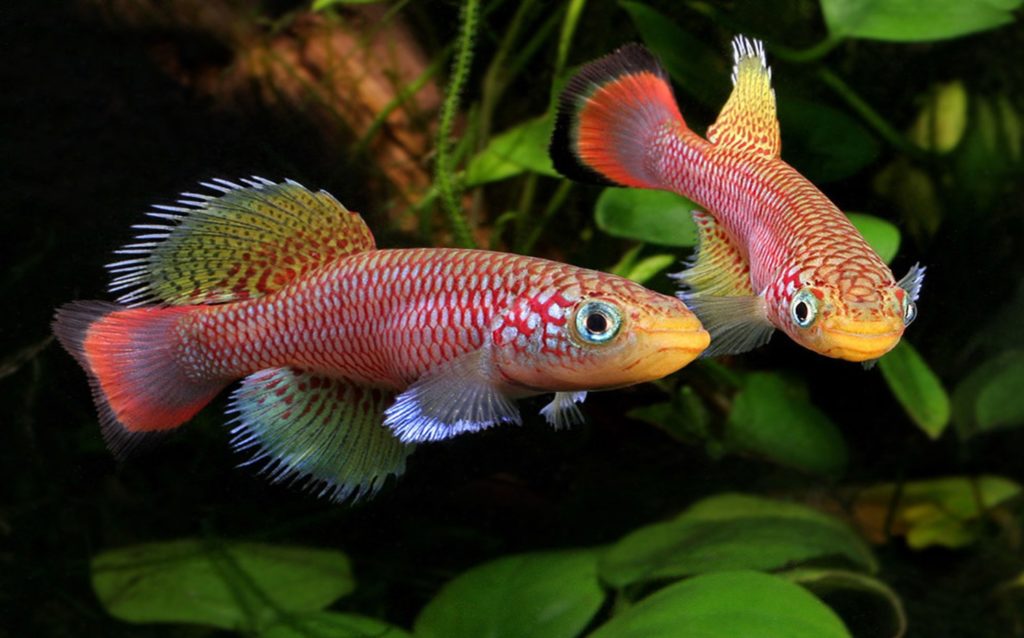Scientific Names
Although there are many species available, most common commercially available species are:
Aphyosemion sp – Killifish species
Aplocheilus sp, Epiplatys sp,
Pseudepiplaty sp – Panchax species
Maximum Size and Longevity
Killifish are usually small fish and, depending on the type of species, the size varies from 2 to 6 cm.
Panchax species will grow to a maximum size of 10cm.
Many of the Aphyosemion species are annual species and can only live for one year, while the Panchax group can live for several years.
Water quality
Water quality will vary depending on species, but as a general rule prefer mild acid water.
Temperature: 20oC – 24oC
pH: 5.5 – 7.5
General hardness: 50-150 ppm
Feeding
Killifish have a small mouth structure, so be sure to select foods that are suitable.
Compatibility
Many killifish can be safely combined with small catfish, small tetras and other non-territorial fish.
Do not keep them with larger predatory fish that would attack this small fish. They can also be kept alone in a small tank where they can readily display their amazing reproductive colors.
Color and varieties
The Killifish group has a very diverse color and great variety.
For example, many of the Aphiosemion species have brightly colored males. One possible reason for their bright colors is because they are commonly found in dark waters with low visibility and therefore need really bright and striking colors to attract females.
Tips to maintain successfully
These brightly colored fish are not fussy and are ideal for a community aquarium. They prefer a planted tank and softer water conditions on the acid side.
General Information and Reproduction
Some species in this group can lay their eggs in the substrate when their natural habitats dry up and the eggs hatch when water returns with rain.
Some killifish such as the Aphyosemion have also been called “annual fish” for this reason. Other species can spawn among floating plants and often reproduce in
densely planted community tanks. Males are often extremely colorful, while small females are subdued in their coloring.
Afiosemion species may be prone to velvet, but respond well to normal treatments for this disease.
Generally a robust group with no particular needs.
